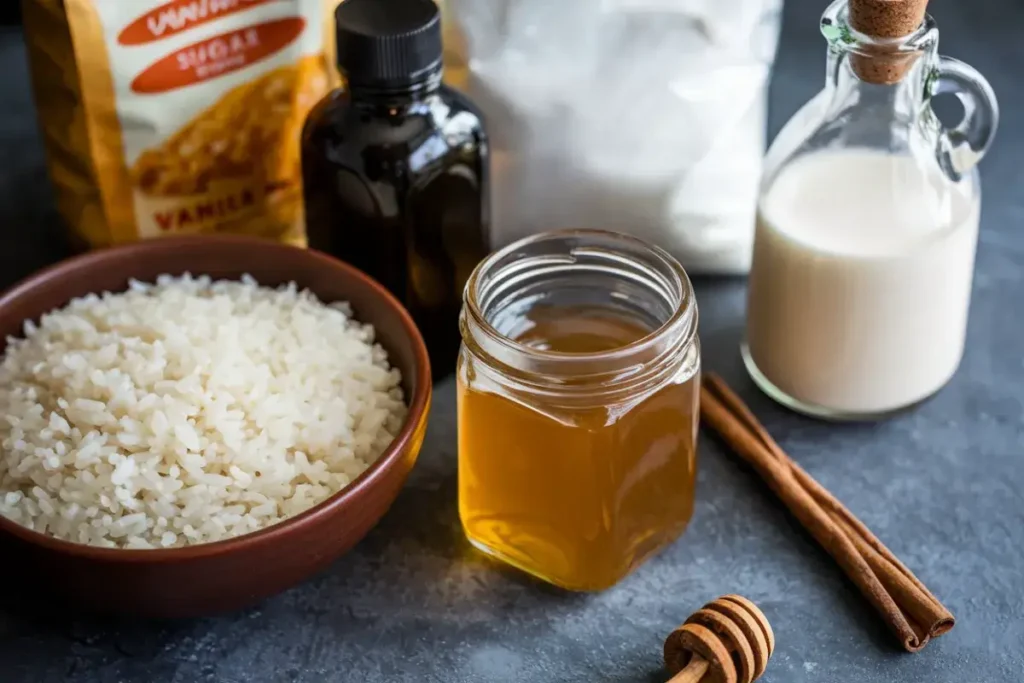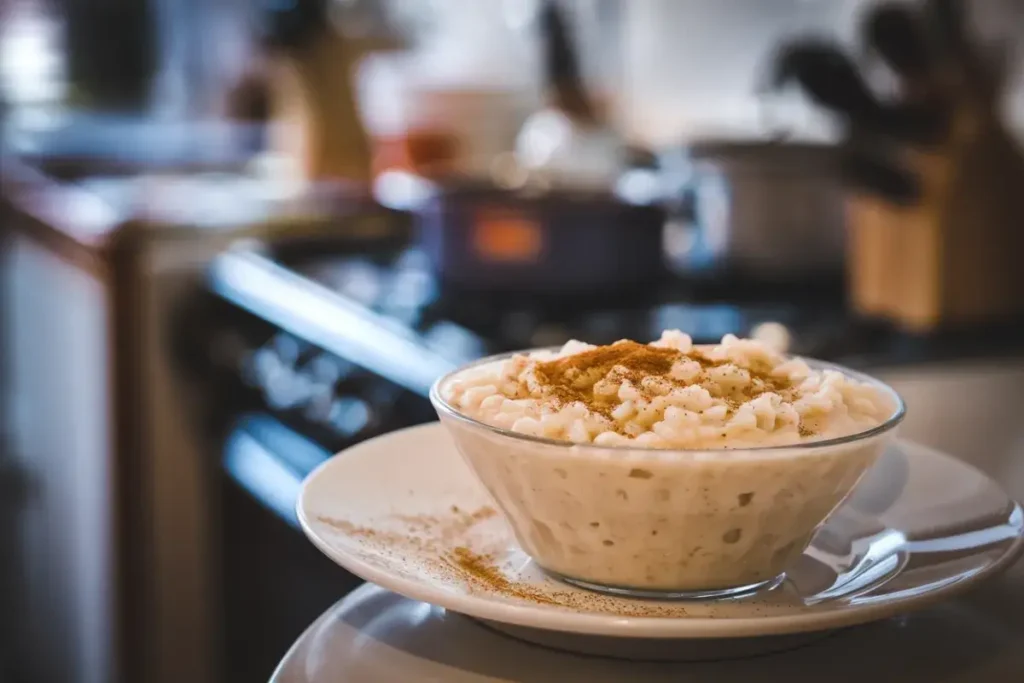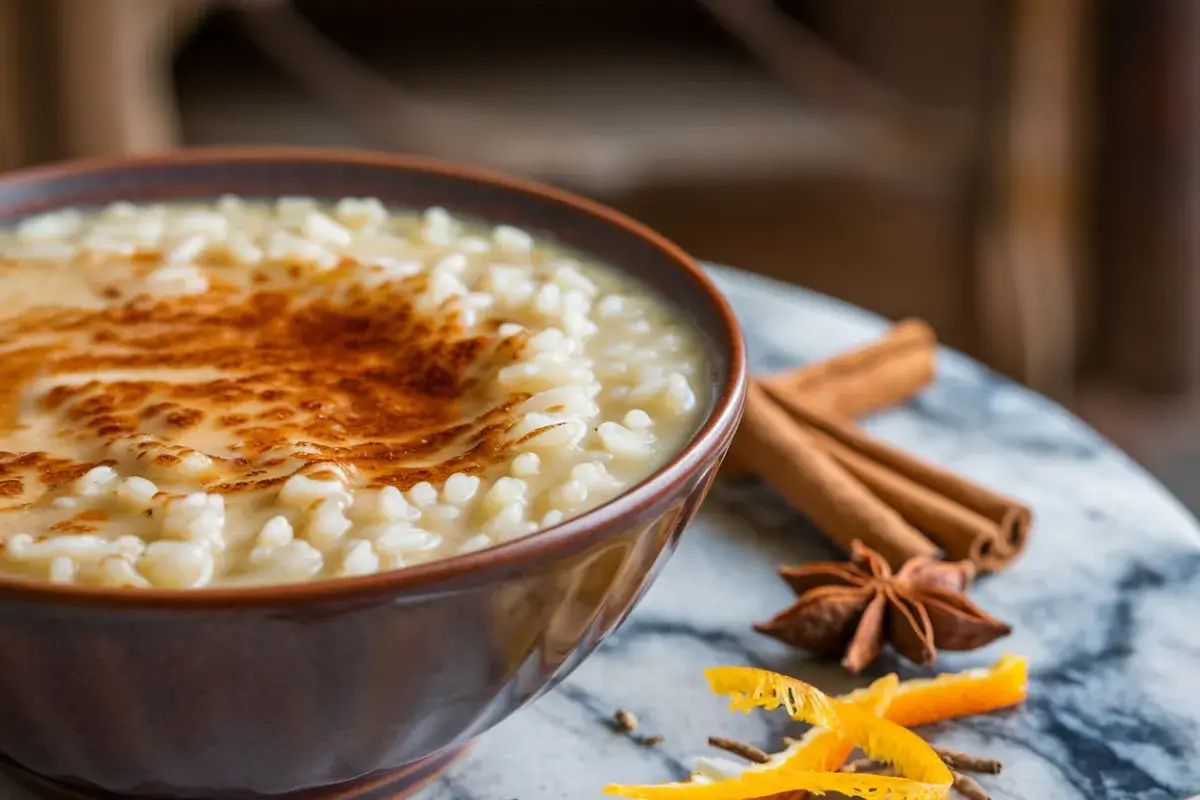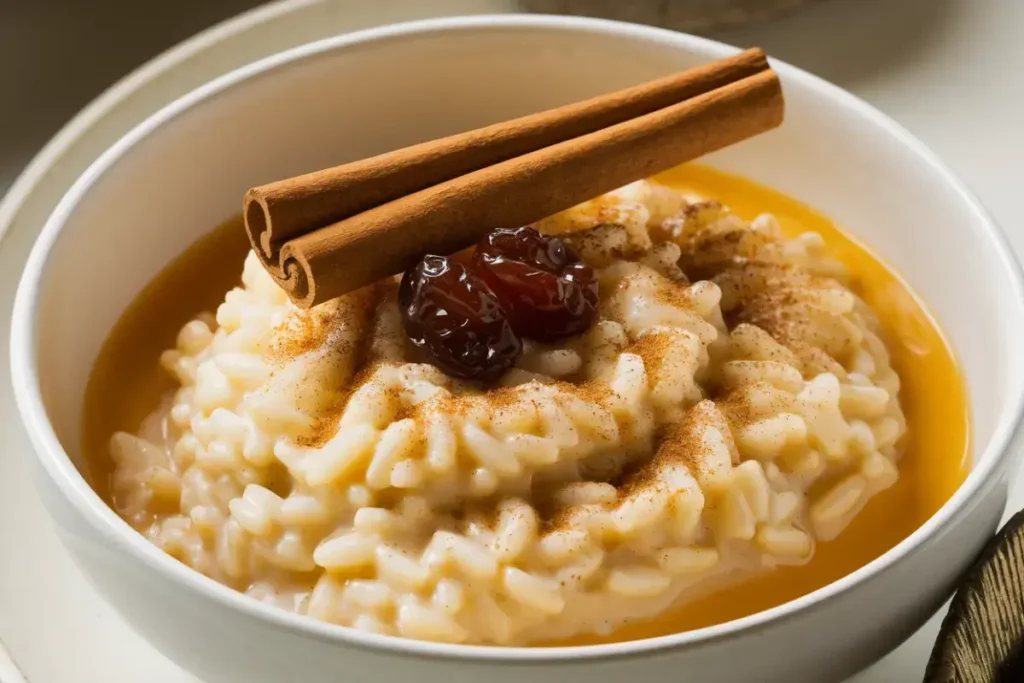Rice pudding is a cherished dessert enjoyed by people around the globe. Whether it’s known as arroz con leche, kheer, or simply rice pudding, this dish holds a special place in many hearts due to its comforting and nostalgic nature. The combination of creamy texture, gentle sweetness, and the warmth of spices makes it an ideal treat for any occasion. In this guide, we’ll walk you through the process of making this classic dessert at home, from selecting the best ingredients to mastering the cooking steps.
What is Rice Pudding?
Rice pudding is a creamy, sweet dessert created by cooking rice in milk. It’s often sweetened with sugar or honey and flavored with spices like cinnamon, vanilla, or cardamom. While the core ingredients remain consistent, rice pudding has many regional variations. For instance, arroz con leche is popular in Latin America and is usually flavored with cinnamon, while in India, kheer might include cardamom and saffron. The beauty of this dessert lies in its versatility, allowing you to adapt it to suit your preferences.
The Essential Ingredients for Rice Pudding

To craft a delicious rice pudding, you’ll need a few key ingredients. While simple, these ingredients can significantly influence the final taste and texture.
Choosing the Right Rice
The type of rice you use plays a crucial role in the texture of the pudding. Short-grain rice, like Arborio, is ideal because it releases more starch during cooking, resulting in a creamier texture. You can also use basmati rice for a slightly different flavor profile. It’s best to avoid long-grain rice like jasmine since it tends to stay firm and doesn’t absorb the milk as effectively.
The Importance of Dairy
Milk is the primary liquid in this dessert and is key to achieving its creamy consistency. Whole milk is commonly used, but for a richer version, you can substitute with cream. If you prefer a dairy-free option, plant-based milks such as almond or coconut milk work well. Coconut milk, in particular, adds a subtle tropical flavor that enhances the dessert. For more information on plant-based alternatives, take a look at this guide on plant-based milk.
Sweeteners and Flavorings
While sugar is traditionally used as the sweetener in rice pudding, you can also use alternatives like honey, maple syrup, or stevia depending on your taste preferences. Common flavorings include vanilla extract, cinnamon, and nutmeg, all of which enhance the dessert’s natural sweetness. To add a fresh twist, consider incorporating citrus zest, such as lemon or orange.
Tools and Equipment Needed
Before you begin, it’s important to gather the necessary tools to ensure a smooth cooking process:
- Saucepan: A heavy-bottomed saucepan helps cook the pudding evenly, preventing the milk from burning.
- Wooden Spoon or Silicone Spatula: These are perfect for stirring the pudding to prevent sticking.
- Measuring Cups and Spoons: Accurate measurements are essential for a balanced recipe.
- Whisk: If you’re making a baked version of this dessert, a whisk is handy for incorporating eggs.
Having the right tools not only makes the process easier but also ensures that your rice pudding turns out perfectly every time.
Preparing the Rice
Properly preparing the rice is key to achieving the perfect texture in your pudding.
Rinsing and Soaking the Rice
Start by rinsing the rice under cold water until the water runs clear. This step removes excess starch, which prevents the pudding from becoming too thick or gummy. For an even creamier texture, soak the rice for about 30 minutes before cooking. Soaking softens the rice, helping it to cook more evenly.
Cooking the Rice Before Adding Dairy
Begin by partially cooking the rice in water before adding the milk. This ensures that the rice is tender and absorbs the milk effectively, contributing to the pudding’s creamy texture. Bring the rice and water to a boil, then reduce the heat and simmer until the water is almost absorbed.
Variations of Rice Pudding
One of the great aspects of this dessert is how easily it can be adapted to different tastes and dietary needs.

Classic Creamy Rice Pudding
The traditional method involves slowly cooking the rice in milk until it reaches a tender consistency and the mixture thickens. This version is rich and comforting, making it perfect for serving warm with a sprinkle of cinnamon.
Vegan Rice Pudding
For a vegan version, simply replace dairy milk with your favorite plant-based milk, such as almond or coconut. Coconut milk adds a rich, tropical flavor that pairs beautifully with the rice.
Flavored Rice Puddings
Rice pudding can take on a variety of flavors with the addition of different ingredients. For a chocolate version, stir in cocoa powder or melted chocolate towards the end of the cooking process. If you prefer a coconut variation, substitute some or all of the milk with coconut milk and top with toasted coconut flakes.
Regional Rice Pudding Variations
Rice pudding has a diverse history, with each region offering its unique twist. In India, kheer often includes cardamom and nuts, while arroz con leche from Latin America typically features cinnamon and citrus zest. Exploring these variations can give you a deeper appreciation for how this dessert has evolved across different cultures.


